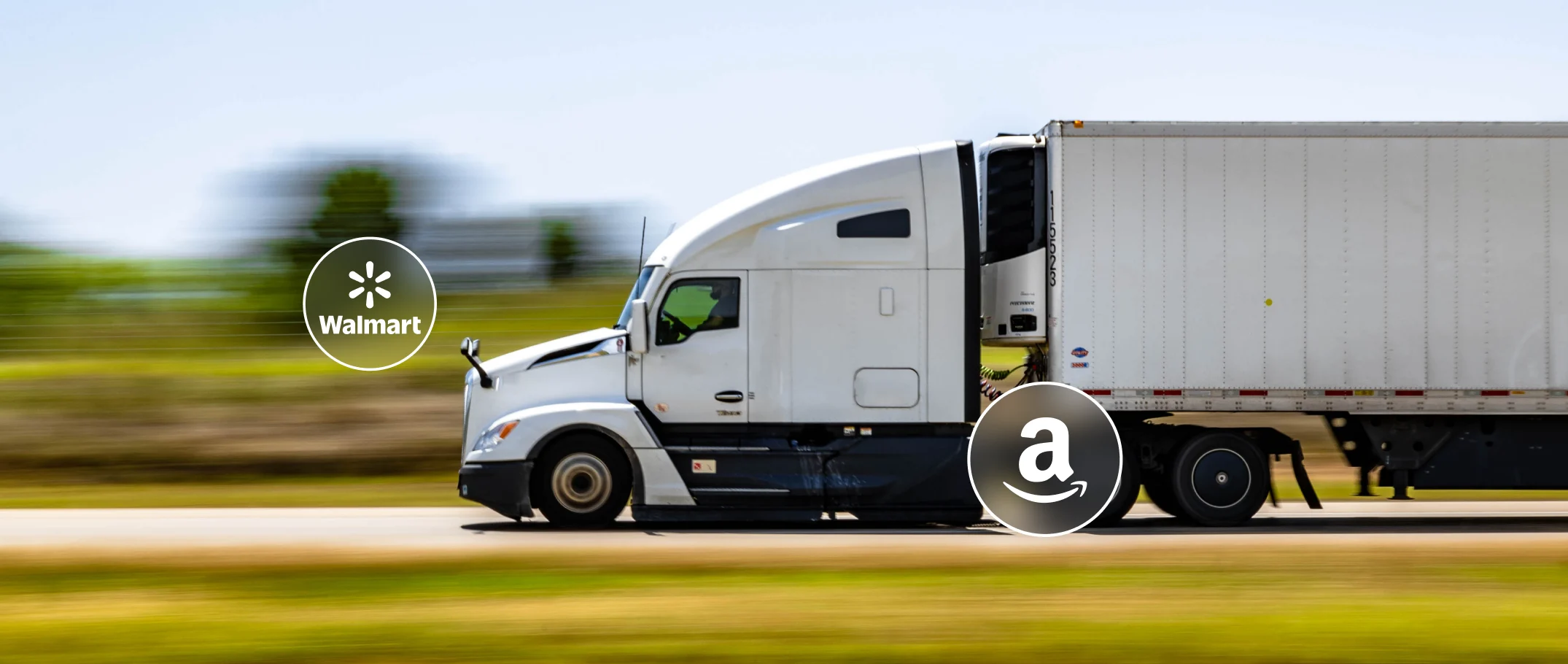If you’re an Amazon or Walmart seller looking to expand globally, mastering cross-border shipping is no longer optional — it’s essential. This guide breaks down everything you need to know to streamline international logistics, avoid costly mistakes, and grow your e-commerce business across borders.

🌍 Why Cross-Border Shipping Matters in 2025
The global e-commerce market is booming. According to recent data, international e-commerce is projected to reach $3.3 trillion by 2028, up from $1.6 trillion in 2023. Sellers on platforms like Amazon and Walmart are increasingly tapping into this growth by offering products to customers in Canada, Europe, Asia, and beyond.
Key benefits of cross-border selling:
- Expanded customer base: Reach millions of new buyers.
- Higher average order value: Canadian buyers, for example, spend 23% more per transaction than U.S. shoppers.
- Competitive advantage: Sellers who offer international shipping stand out from domestic-only competitors.
🛒 Amazon & Walmart: Cross-Border Fulfillment Updates
In 2025, both Amazon and Walmart have made significant strides in supporting cross-border sellers:
Amazon Multi-Channel Fulfillment (MCF)
- You can now use Amazon’s fulfillment network to ship orders from other platforms — including Walmart.
- Packaging rules: Use plain, unbranded boxes. No Amazon logos or invoices.
- Carrier restrictions: Block Amazon Logistics; use USPS, UPS, or FedEx instead.
Walmart’s Cross-Fulfillment Policy
- Walmart officially allows sellers to fulfill orders using Amazon’s MCF — as long as you follow the packaging and carrier rules.
- Violating these rules (e.g., using Amazon-branded boxes) can lead to account suspension.
🚚 Choosing the Right Cross-Border Shipping Strategy
There’s no one-size-fits-all approach. Your strategy depends on your product type, target market, and fulfillment capabilities.
1. Direct Shipping from Domestic Warehouse
- Ship orders internationally from your U.S.-based warehouse.
- Best for: Low-volume sellers testing new markets.
- Pros: Simple setup, no need for international warehousing.
- Cons: Longer delivery times, higher shipping costs.
2. Third-Party Logistics (3PL) Providers
- Partner with a 3PL that specializes in cross-border shipping.
- Best for: Sellers scaling internationally.
- Pros: Faster delivery, customs expertise, localized returns.
- Cons: Monthly fees, integration setup.
3. Fulfillment by Amazon (FBA) Global Export
- Amazon handles international orders from your FBA inventory.
- Best for: Sellers already using FBA.
- Pros: Seamless integration, trusted delivery.
- Cons: Limited to eligible countries, higher fees.
4. Local Warehousing
- Store inventory in target countries (e.g., Canada, UK).
- Best for: High-volume sellers with consistent demand.
- Pros: Fast delivery, lower shipping costs.
- Cons: Complex logistics, import duties.
📦 Packaging & Labeling for International Orders
Proper packaging isn’t just about protection — it’s about compliance.
Best practices:
- Use durable, weather-resistant materials.
- Include customs documentation: Commercial invoice, packing list, and HS codes.
- Avoid branded packaging when fulfilling Walmart orders via Amazon MCF.
- Label clearly: Include destination country, postal code, and contact info.
🧾 Customs, Duties & Taxes: What Sellers Must Know
Navigating customs is one of the biggest challenges in cross-border shipping.
Key concepts:
- HS Code: Harmonized System code used to classify goods.
- Duties: Import taxes based on product type and value.
- VAT/GST: Value-added tax or goods and services tax in many countries.
Tips to simplify customs:
- Work with carriers or 3PLs that offer Delivered Duty Paid (DDP) options.
- Use automated tools to calculate duties and taxes.
- Be transparent with customers about potential fees.
🌐 Localizing the Shopping Experience
Selling internationally isn’t just about shipping — it’s about creating a seamless experience.
Localization checklist:
- Currency conversion: Display prices in local currency.
- Language support: Translate product descriptions and customer service.
- Payment options: Offer region-specific methods (e.g., iDEAL in the Netherlands, Alipay in China).
- Return policies: Make returns easy and affordable for international buyers.
📈 SEO & Marketing for Global Reach
To succeed in cross-border e-commerce, you need visibility.
SEO tips for international sellers:
- Use hreflang tags to target multiple languages.
- Optimize product listings with local keywords.
- Create country-specific landing pages.
- Leverage Amazon Global Selling tools for localized marketing.
Marketing strategies:
- Run geo-targeted ads on Google and Facebook.
- Partner with local influencers.
- Offer limited-time international promotions.
🧠 Common Mistakes to Avoid
Even experienced sellers make costly errors. Here’s what to watch out for:
- Ignoring customs regulations: Leads to delays or confiscated goods.
- Using branded packaging for Walmart orders: Violates policy.
- Underestimating shipping costs: Eats into profit margins.
- Poor customer communication: Damages reputation.
- Lack of return strategy: Discourages repeat purchases.
✅ Cross-Border Shipping Checklist for Amazon & Walmart Sellers
Before you launch, make sure you’ve covered the essentials:
- Choose your fulfillment strategy (FBA, 3PL, direct, local warehouse)
- Understand customs, duties, and taxes
- Set up international-friendly packaging and labeling
- Localize your listings and checkout experience
- Use tools to automate and optimize logistics
- Monitor performance and adjust based on feedback
🚀 Final Thoughts: Going Global with Confidence
Cross-border shipping is no longer a luxury — it’s a growth engine. With the right strategy, tools, and partners, Amazon and Walmart sellers can unlock new markets, boost revenue, and build a truly global brand.
Start small, learn fast, and scale smart. Whether you’re shipping to Canada, Europe, or Asia, the opportunity is massive — and the logistics are manageable with the right guide.



Leave a Reply